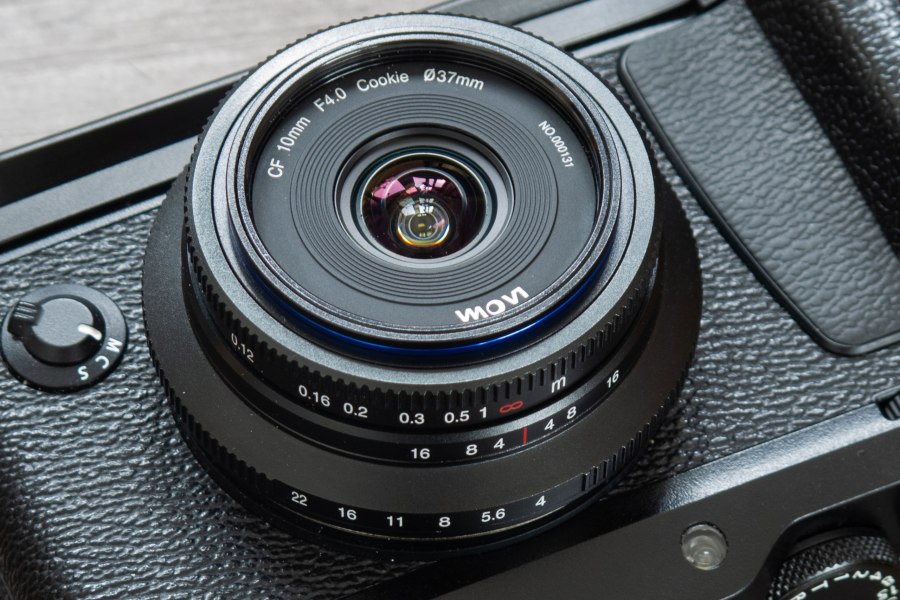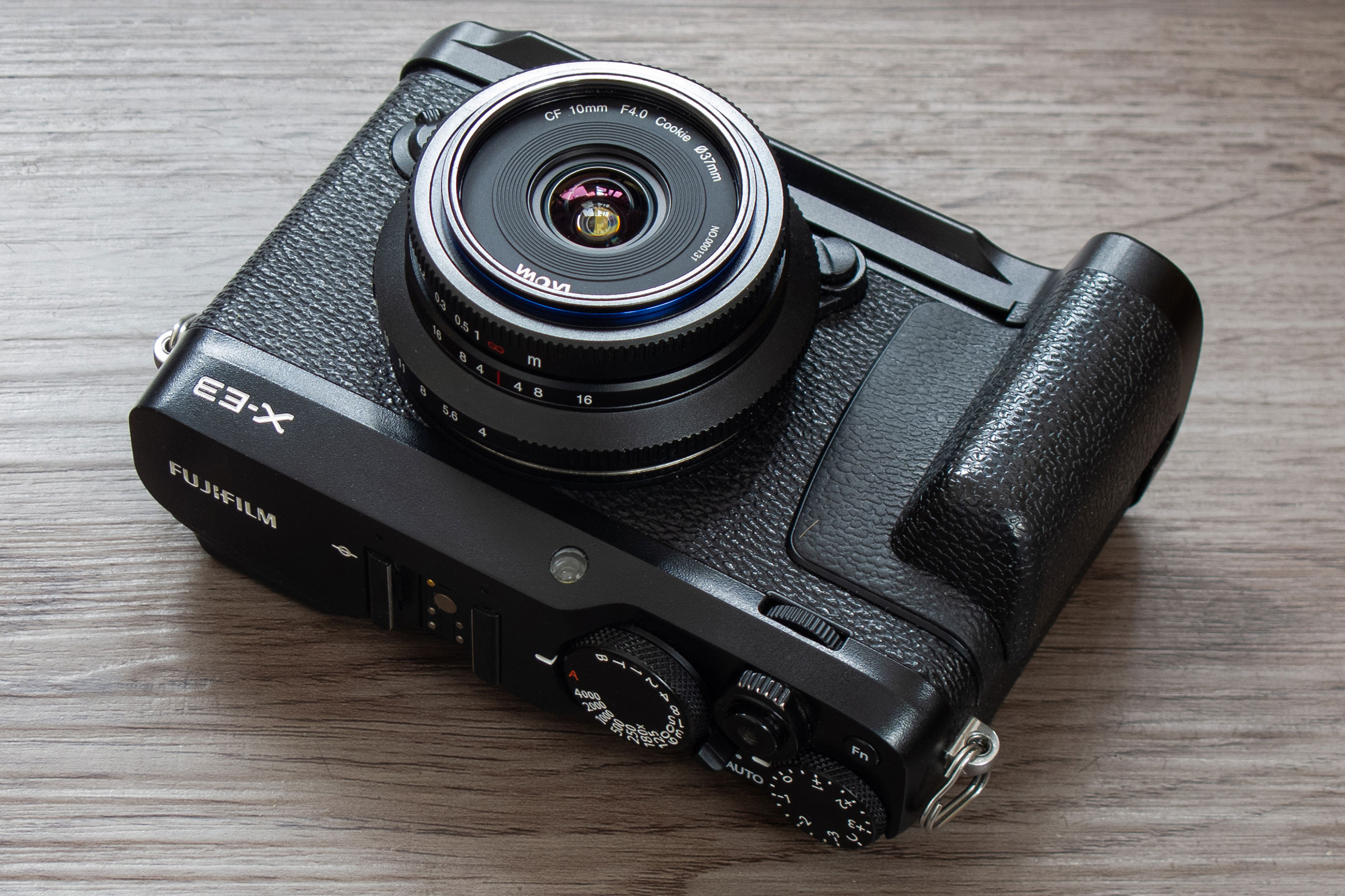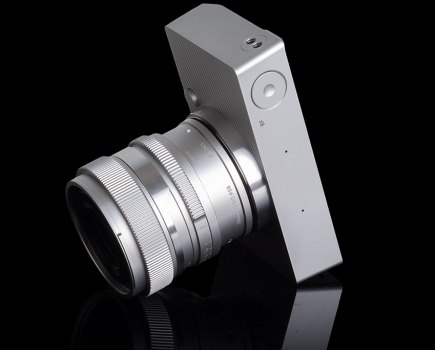Laowa 10mm F4.0 Cookie lens at a glance:
- For APS-C mirrorless cameras
- Ultra-wideangle 15mm equivalent view
- Just 25mm long and 120g
- For Canon RF, Fujifilm X, Nikon Z, Sony E, and L mount
Venus Optics might just be the most creative lens maker at the moment, and its latest optic again illustrates why. The Laowa 10mm F4.0 ‘Cookie’ lens is a unique ultra-wideangle prime for APS-C mirrorless cameras that’s just 25mm long and weighs a mere 120g. It’s available in Canon RF, Fujifilm X, Nikon Z, Sony E, and L mounts, in a choice of black or silver finishes, and costs a very palatable £339.
The firm describes it as ‘the world’s widest rectilinear pancake lens’, but this almost does it a disservice. It’s actually one of the widest-angle APS-C lenses available regardless of size, being surpassed only by Laowa’s own larger, more expensive 9mm F2.8 Zero-D. It offers a huge 109° angle of view, equivalent to a 15mm lens on full frame, which should make it an interesting option for landscapes, architecture, and interiors. ‘Rectilinear’ means that it renders straight lines without distortion, in contrast to a fisheye lens.
Like all Laowa lenses, the 10mm f/4 is manual focus only. It also requires the aperture to be set using a ring on the lens barrel, rather than from the camera. But with a lens this wide used on mirrorless cameras, neither should be a deal-breaker. Let’s see how it performs.
NOTE: This review was carried out using an early sample of the lens that wasn’t cosmetically final. All the product images used in this review were kindly provided by Venus Optics.
Laowa 10mm F4.0 Cookie: Features
Given its slimline dimensions, the Laowa 10mm f/4 uses an impressively complex optical design. Somehow, it squeezes 12 elements arranged in 8 groups into an optical unit that’s just 3cm long. It also makes lavish use of special elements, with four made from extra-low dispersion (ED) glass and two from ultra-high refraction (UHR) glass, along with a pair of aspherical elements. The aim is to minimise distortion and chromatic aberration, while also delivering high levels of sharpness.
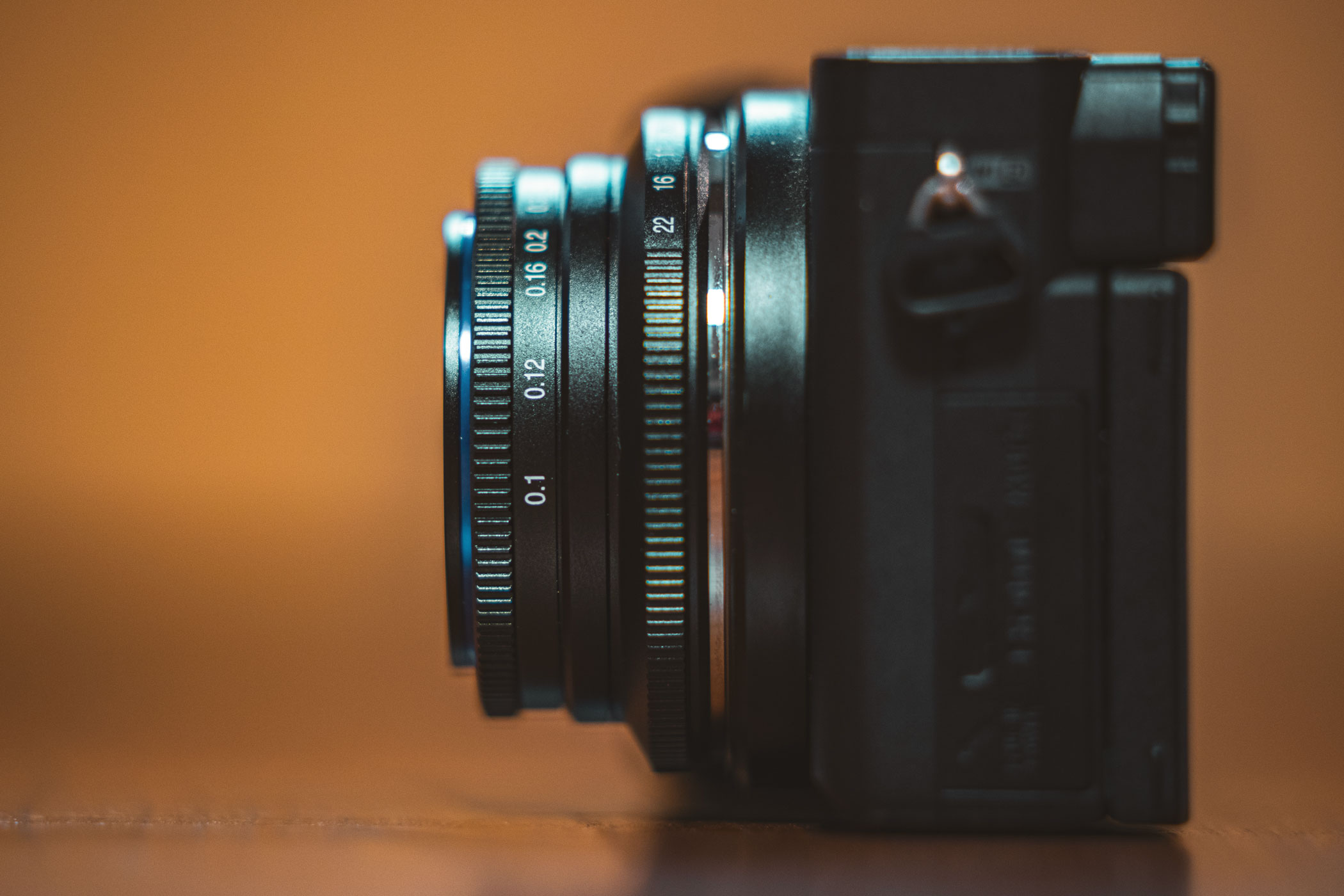
Here you can see just how slim the lens is, mounted on a Sony A6000-series body. Image credit: John Hanson
The lens employs an internal focus design, with a minimum focus distance of just 10cm promising unusual ultra-wide close-ups. Venus Optics has used a relatively simple aperture diaphragm with five straight blades, which promises to give 10-ray sunstars from point light sources. Remarkably, given its huge angle of view, the lens accepts screw-in filters just 37mm in diameter. No hood is supplied, but this is common with pancake-type designs to keep the overall size as slim as possible.
One important point is that no electronics are built into the lens for communication with the camera. As a result, you may need to enable a ‘Shoot without Lens’ (or similar) menu setting to get the camera to take pictures. Likewise, neither the focal length nor the aperture will be included in the EXIF data of your images. When the lens is used on a camera with in-body image stabilisation, you’ll need to enter the focal length manually to get the correct degree of correction. If you want to use this lens on a full-frame camera, you’ll need to select APS-C crop mode manually. Needless to say, the camera can’t apply any software corrections for distortion, vignetting or chromatic aberration.
Laowa 10mm F4.0 Cookie: Build and Handling
As we’ve come to expect from Laowa lenses, the 10mm f/4 is very nicely constructed, with an all-metal barrel and mount. The aperture ring is placed next to the camera, with the manual focus ring at the front, separated only by a slim non-rotating section of the barrel. But as the aperture ring is much larger in diameter, you shouldn’t mistake one for the other with the camera up to your eye, or accidentally nudge both at the same time.
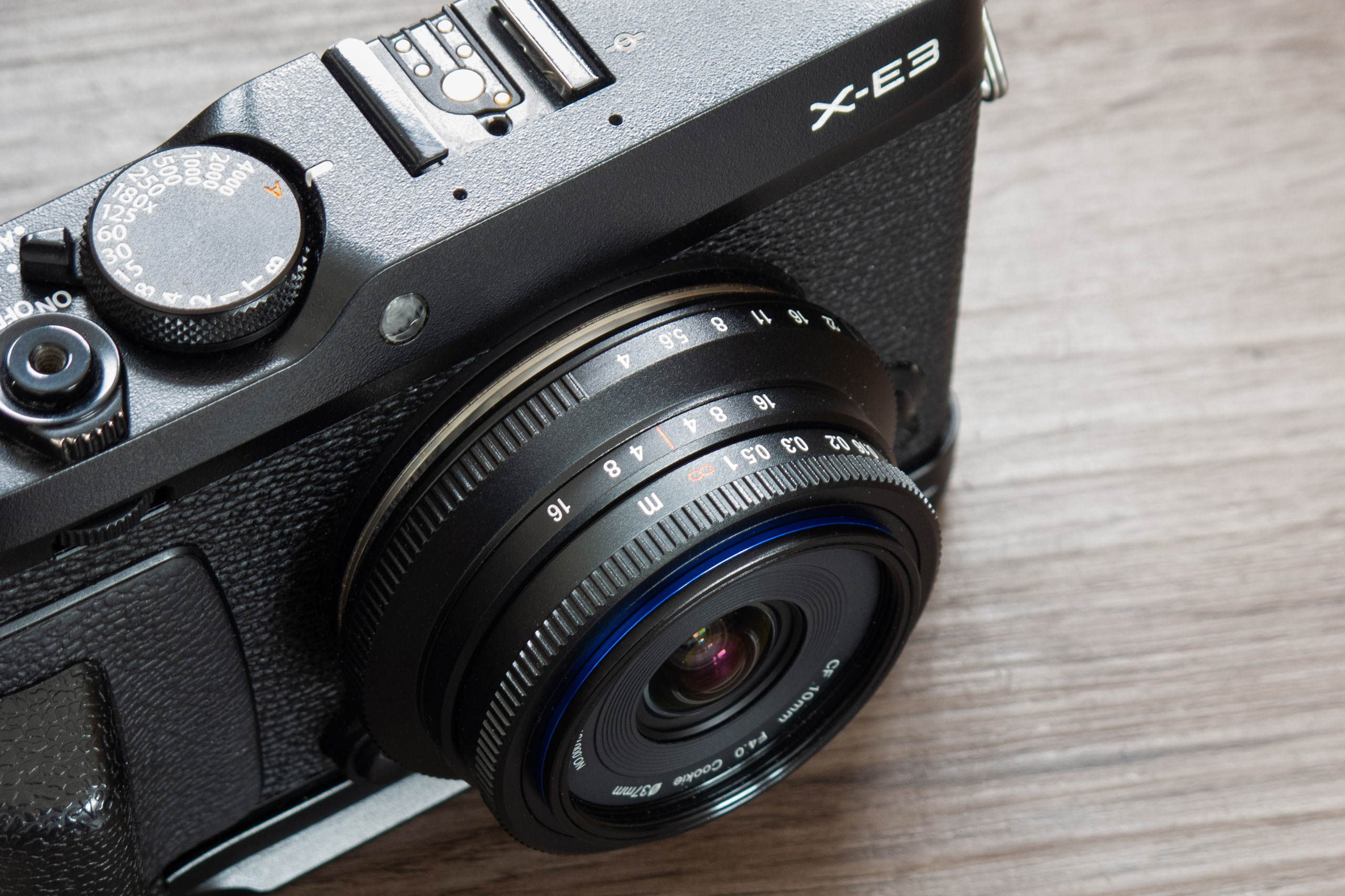
The aperture ring is placed next to the camera, with the narrower diameter focus ring at the front. Image credit: Thomas John
Both rings rotate very smoothly, with the focus ring requiring a 90-degree rotation between infinity and its closest 10cm setting. It has a distance scale that’s marked in metres only, complemented by a depth-of-field scale with markings for f/4, f/8, and f/16. Meanwhile, the aperture ring has subtle but firm detents at whole-stop increments between f/4 and its f/22 minimum. It can easily be set to intermediate values if you wish.
I tested the lens primarily using the small flat-bodied Sony Alpha 6000, which it complements nicely. I also used it on the full-frame, SLR-shaped Sony Alpha 7R IV set to its 26MP APS-C crop mode. On both cameras, it’s so small and light you barely notice it’s there.
One minor challenge is working out how best to hold the lens when either fitting it onto, or removing it from, the camera. It feels most natural to grab it by the widest section, but then you end up rotating the aperture ring to one extreme before the lens itself starts to move. Instead, you’re better off training yourself to grasp the lens by the fixed section of the barrel. It’s a pity Venus Optics hasn’t machined grips on either side to provide better purchase.
In practical use, the real beauty of this lens is that you end up with such a compact set-up. It’s less than half the length of other APS-C ultra-wide primes such as the Laowa 9mm F2 Zero-D, Sony E 11mm F1.8 or Samyang 12mm F2 CS NCS, which themselves aren’t exactly huge. This is a lens you can easily slip into a small bag or a pocket without worrying about its weight or bulk, which I certainly appreciated on a hot summer afternoon’s walk in rural Kent.

The lens includes a depth of field scale for using hyperfocal or zone focusing. Image credit: Venus Optics
When it comes to focusing, you’ll need to set a function button to activate your preferred focusing aid manually, with magnified live view generally giving the most accurate results. Alternatively, you can use the hyperfocal principle to pre-set the focus. The lens offers such extreme depth-of-field that if you set the focus distance to 1m, everything from 50cm to infinity should be acceptably sharp in print, even at f/4. If you want everything to look pixel-sharp on screen, though, that’s a different matter, and you may need to close the aperture down two or three stops further. I found it was quite easy to nudge the focus ring out of position accidentally, too, so if you use this approach, it pays to keep a close eye on it while shooting.
Laowa 10mm F4.0 Cookie: Performance
Lens design is always about compromises, one way or another, and the Laowa 10mm F4 illustrates this well. Compared side-by-side to its 9mm f/2 sibling, it’s easy to see what the firm has sacrificed to achieve its petite dimensions. Primarily, while sharpness is impressive over much of the frame, the extreme corners show distinct radial smearing that never fully clears up at smaller apertures. Also, the tiny optical unit brings pronounced vignetting at f/4, and while this diminishes as the aperture is closed down, it never entirely goes away. But it can be fixed with a vignetting correction setting of +50 in Adobe Camera Raw.

At its best, the lens gives excellent images. Sony Alpha 6000, 1/200sec at f/11, ISO 100. Image: Andy Westlake. Click on any sample image to see the full-size version
However, while it’s easy to dwell on the lens’s weaknesses, it would be a mistake not to acknowledge its real strengths. Even at f/4, central sharpness is very respectable, with fine detail rendition extending out to the far edges of the frame. It gets slightly crisper on stopping down, and overall, I was happiest with the images I got at f/8. Stop all the way down to f/22, though, and diffraction blurring becomes evident. Given that you rarely lack for depth-of-field, I’d avoid using this aperture.

This image shows a little colour fringing on the building on the left, but it’s a simple fix in raw processing. Sony Alpha 7R IV (APS-C crop), 1/1000sec at f/8, ISO 100. Image: Andy Westlake
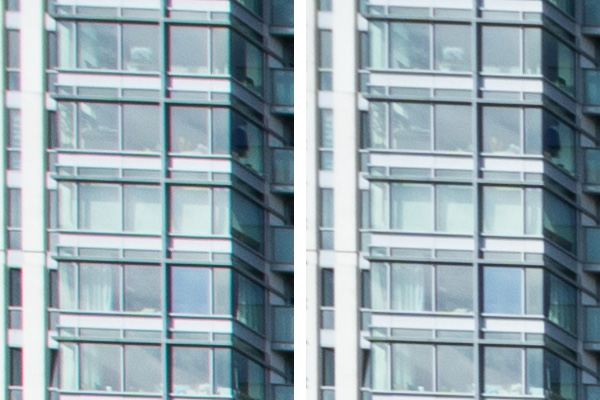
These 100% crops from the the top left corner of the image above show the original image (left) and the version corrected for chromatic aberration (right) using Adobe Camera Raw. Click the image above to see the full-size corrected image
There’s just a little barrel distortion, with straight lines bowing visibly outwards along the edge of the frame. But it’s really very slight and can be almost completely fixed by applying a distortion correction setting of +3 in Adobe Camera Raw. Likewise, a little green and magenta colour fringing can be visible in towards the corners as a result of lateral chromatic aberration. But again, it’s a simple one-click fix in raw processing.

The huge angle of view proved ideal for capturing the palatial interiors of London’s new Elizabeth Line. Here I corrected distortion, vignetting and chromatic aberration in raw processing. Sony Alpha 7R IV (APS-C crop), 1/320sec at f/8, ISO 320. Image: Andy Westlake

This is the same image as above, without any lens corrections applied. Sony Alpha 7R IV (APS-C crop), 1/320sec at f/8, ISO 320. Image: Andy Westlake
On the whole, the lens is quite resistant to flare or ghosting. Point it directly into the sun, and you’ll see little loss of contrast. Stop the aperture down to f/8, and you’ll get attractive, well-defined sunstars of the type that some landscape photographers value highly. You can, however, get quite significant flare streaking and loss of contrast when the sun is out-of-frame and shining obliquely on the front element at just the wrong angle. But this is quite obvious in the viewfinder, so you can take countermeasures such as adjusting your composition or shading the front of the lens with your hand.
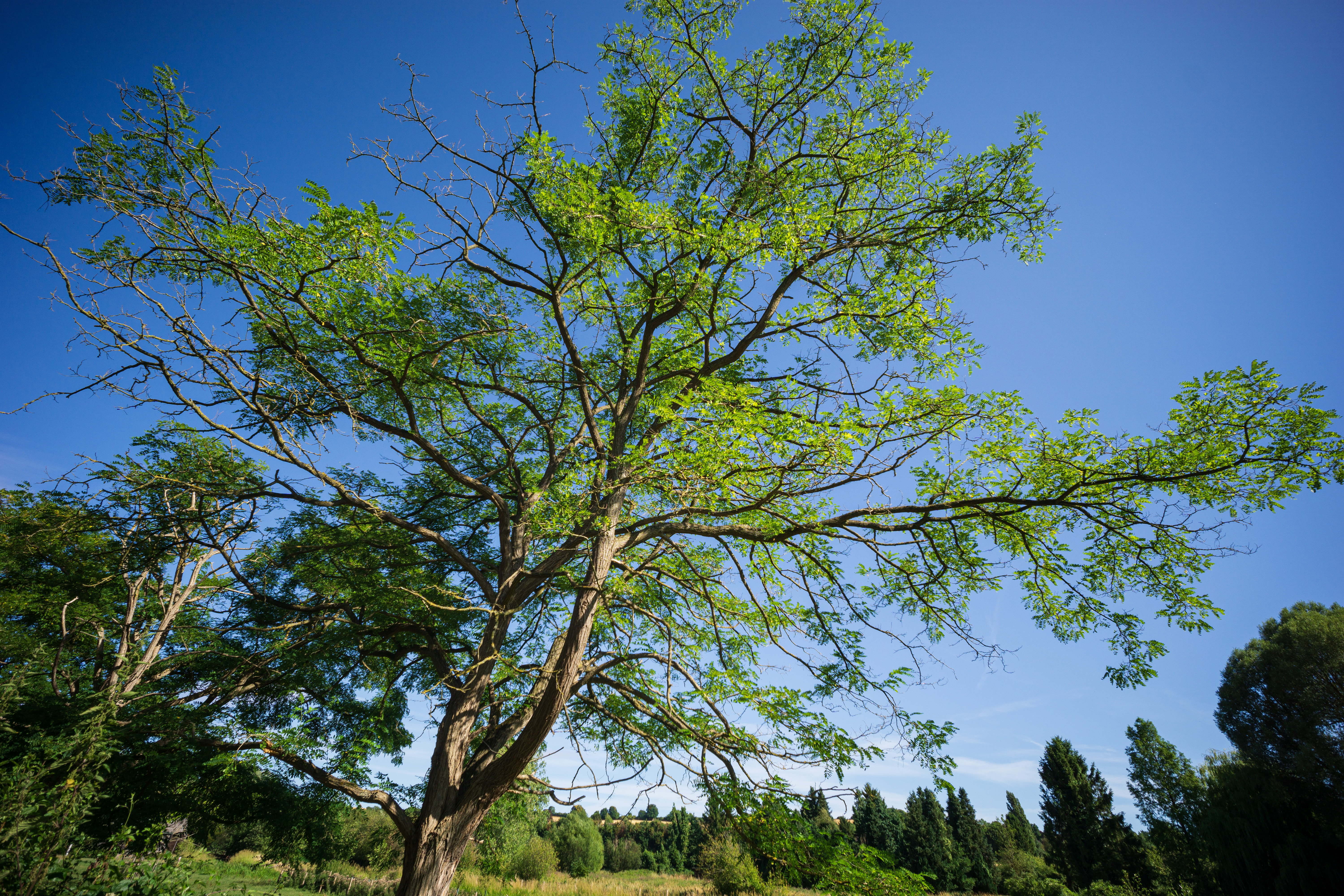
The best results overall are seen at about f/8, with sharp detail across almost the entire frame. Sony Alpha 6000, 1/2000sec at f/8, ISO 200. Image: Andy Westlake
One quirk I discovered is that, when using the lens on the Sony A6000, the camera consistently underexposed by about a stop. But this was easy to see and apply exposure compensation accordingly. In contrast, the Sony Alpha 7R IV metered much more accurately.
Laowa 10mm F4.0 Cookie: Our Verdict
The Laowa 10mm F4 Cookie is a neat little lens that offers users of APS-C mirrorless cameras an ultra-wide view at an attractively affordable price. Its ultra-compact size and barely noticeable weight means that there’s no need to leave it at home, even when you’re packing light. Play to its strengths, and it’ll reward you with sharp images with a striking perspective. Optically, the firm’s 9mm f/2 Zero-D is still superior, but that reflects the fact that it’s twice the length and costs half as much again.
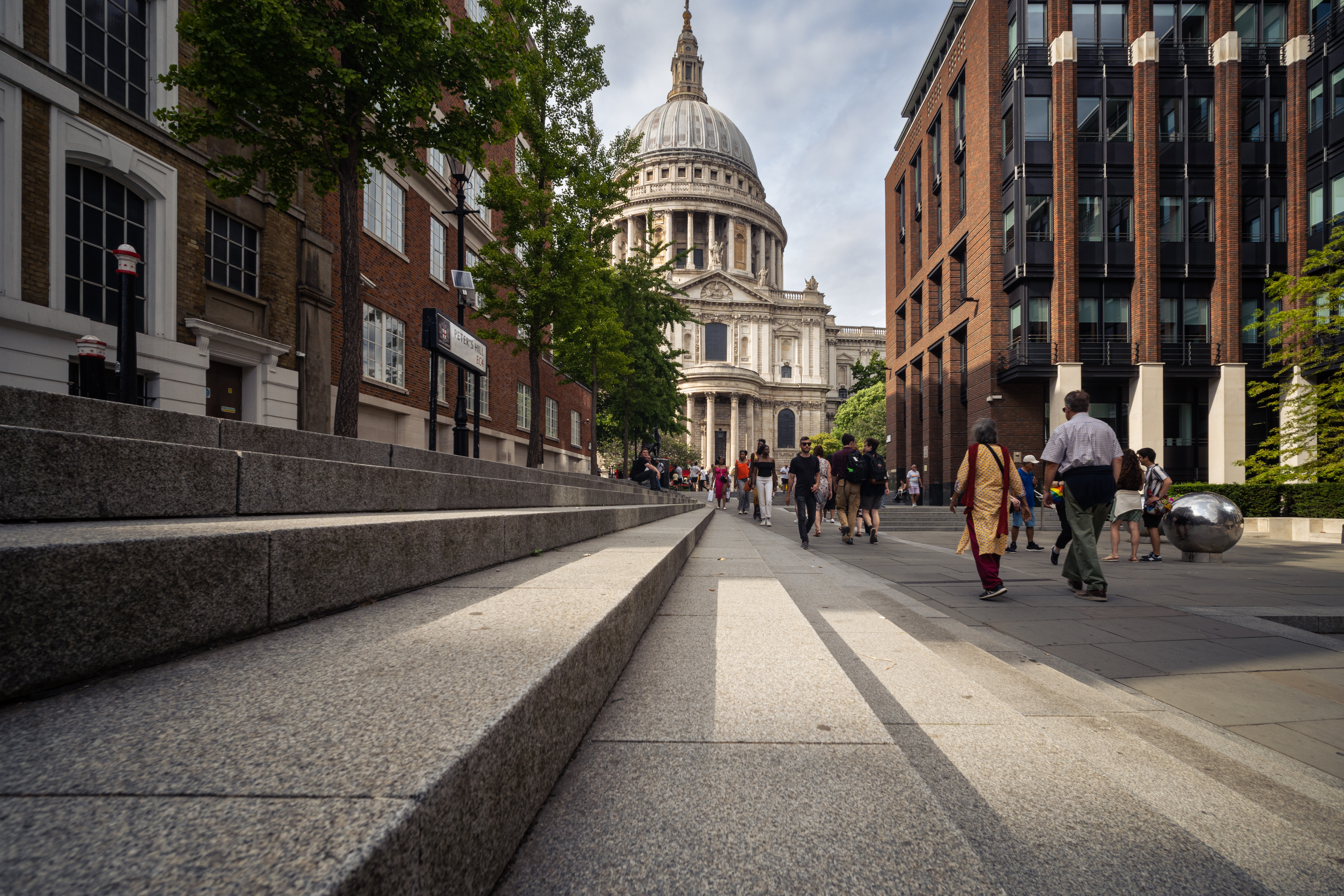
Lenses this wide require careful composition to avoid empty foregrounds. Sony Alpha 7R IV, 1/160sec at f/11, ISO 160. Image: Andy Westlake
For photographers, this is a lens that should be of interest to those shooting subjects such as landscapes and architecture. It could also be useful for vloggers recording themselves at arm’s length, with the huge depth of field making up for the lack of autofocus. However, there’s no chance of getting the kind of background blur promised by the Sony E 11mm F1.8.

As with all rectilinear ultra-wide lenses, 3D subjects towards the edge of the frame can end up looking distorted. Sony Alpha 6000, 1/80sec at f/11, ISO 100. Image: Andy Westlake
Those planning on buying their first wideangle lens should, however, think hard about whether this is the ideal choice. Lenses this wide are difficult to use effectively, requiring time and persistence to learn how to get the most from them. Also, if you’re aiming to complement a kit zoom that starts at 18mm or 16mm, the gap to 10mm is vast. This means the Samyang 12mm F2 NCS CS might be a better bet for about the same price. Overall, though, the Laowa 10mm F4 Cookie could well turn out to be a sweet choice for APS-C users who’d like a compact, affordable ultra-wideangle lens.


